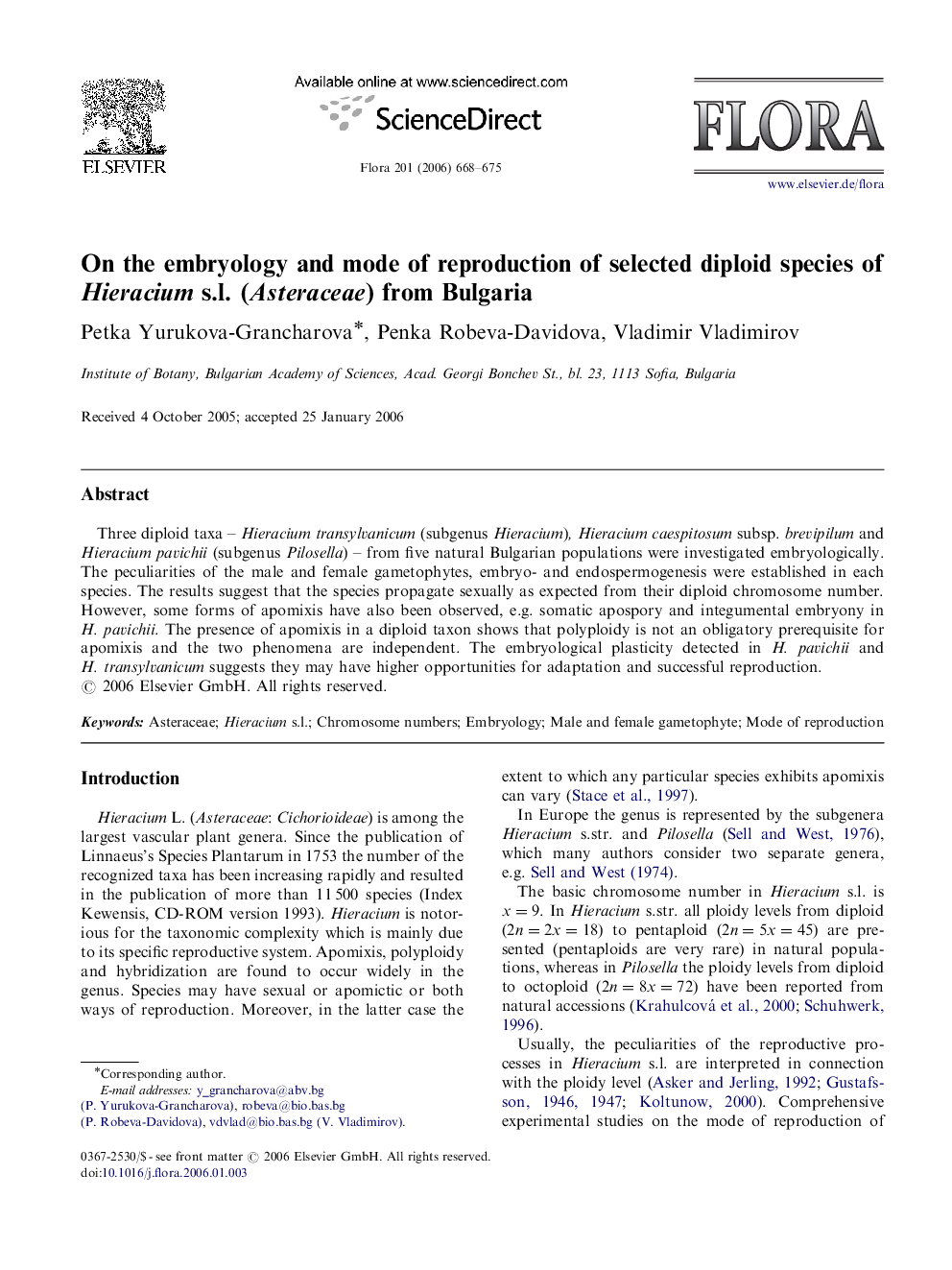| Article ID | Journal | Published Year | Pages | File Type |
|---|---|---|---|---|
| 2180232 | Flora - Morphology, Distribution, Functional Ecology of Plants | 2006 | 8 Pages |
Three diploid taxa – Hieracium transylvanicum (subgenus Hieracium), Hieracium caespitosum subsp. brevipilum and Hieracium pavichii (subgenus Pilosella) – from five natural Bulgarian populations were investigated embryologically. The peculiarities of the male and female gametophytes, embryo- and endospermogenesis were established in each species. The results suggest that the species propagate sexually as expected from their diploid chromosome number. However, some forms of apomixis have also been observed, e.g. somatic apospory and integumental embryony in H. pavichii. The presence of apomixis in a diploid taxon shows that polyploidy is not an obligatory prerequisite for apomixis and the two phenomena are independent. The embryological plasticity detected in H. pavichii and H. transylvanicum suggests they may have higher opportunities for adaptation and successful reproduction.
